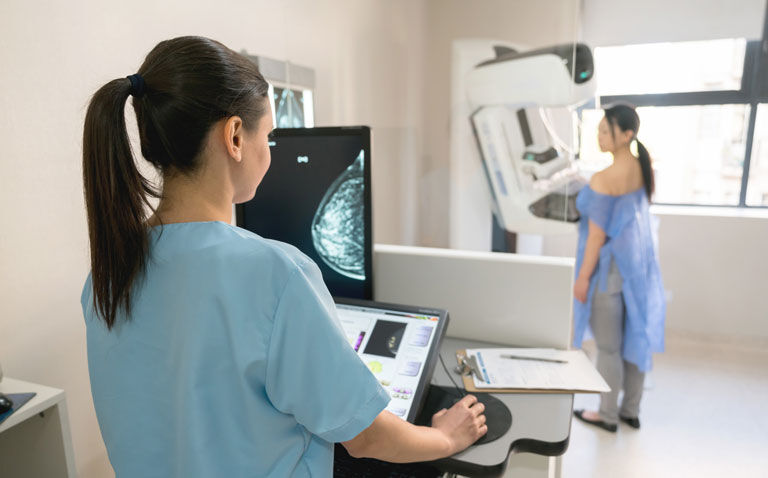Radiographer diagnostic performance for screening mammograms was similar to radiologists offering a solution to the shortage of radiologists
Radiographer diagnostic performance for screening mammography is no different to radiologists for double reading digital mammograms and therefore offers a potential solution to the shortages of radiologists according to the results of a retrospective study by UK researchers.
Screening mammography is widely used in the detection of breast cancer and has been proven to decrease mortality. Moreover, the rate of cancer detection can be further increased by double reading of scans. For example, one study revealed how the relative increase in cancer detection as a result of a second reviewer was 6.3%.
In a 2016 survey, it was found that UK radiographers are already involved with interpreting and reporting images across the full spectrum of clinical indications for mammography including: low-risk population screening, symptomatic, annual surveillance, family history and biopsy/surgical cases. However, despite this change in role, there is limited evidence on the real-life radiographer diagnostic performance in double reading mammograms.
For the present study, the UK team examined the performance of radiographers and radiologists for all screening mammograms in England between 2015 and 2016. The researchers used three key metrics for comparison between radiographers and radiologists: the cancer detection rate (CDR); recall rate (RR) and positive predictive value (PPV) of recall on the basis of biopsy-proven pathological findings for the first readers. Each of the breast scans were analysed based on the reader profession (i.e., radiologist or radiographer) and years of experience.
Radiographer diagnostic performance on screening mammography
A total of 401 readers were included and double read the mammograms of 1,404,395 women. There were 224 radiologists who first read 763,958 mammograms and 177 radiographers who first read 640,437 mammograms.
The overall mean CDR was 7.7 per 1000 examinations and the mean radiographer diagnostic performance was 7.53/1000 examinations and 7.84 for radiologists (p = 0.08). When the researchers analysed CDR’s based on years of experience, there was no variation for either profession (p = 0.87).
The overall recall rate was 5% and again there was no significant difference between radiographers and radiologists (5.2% vs 5%, radiographers vs radiologists, p = 0.63) though the RR was lower for those with more years of experience.
Finally, the overall PPV was 16.7% and again differences between radiographers and radiologists were not significant (16.1% vs 17.1%, radiographers vs radiologists, p = 0.42). As with the RR, PPV improved with more years of experience.
The authors concluded that there were no clear differences in radiographer diagnostic performance and radiologists as readers of screening digital mammograms. They speculated that the use of trained radiographers in the double-reading workflow may offer a potential solution to the shortage of radiologists but suggested that more studies were needed to determine if such physician extender roles can and should, be used to read screening mammograms independent of the radiologist.
Citation
Chen Y et al. Performance of Radiologists and Radiographers in Double Reading Mammograms: The UK National Health Service Breast Screening Program Radiology 2022










